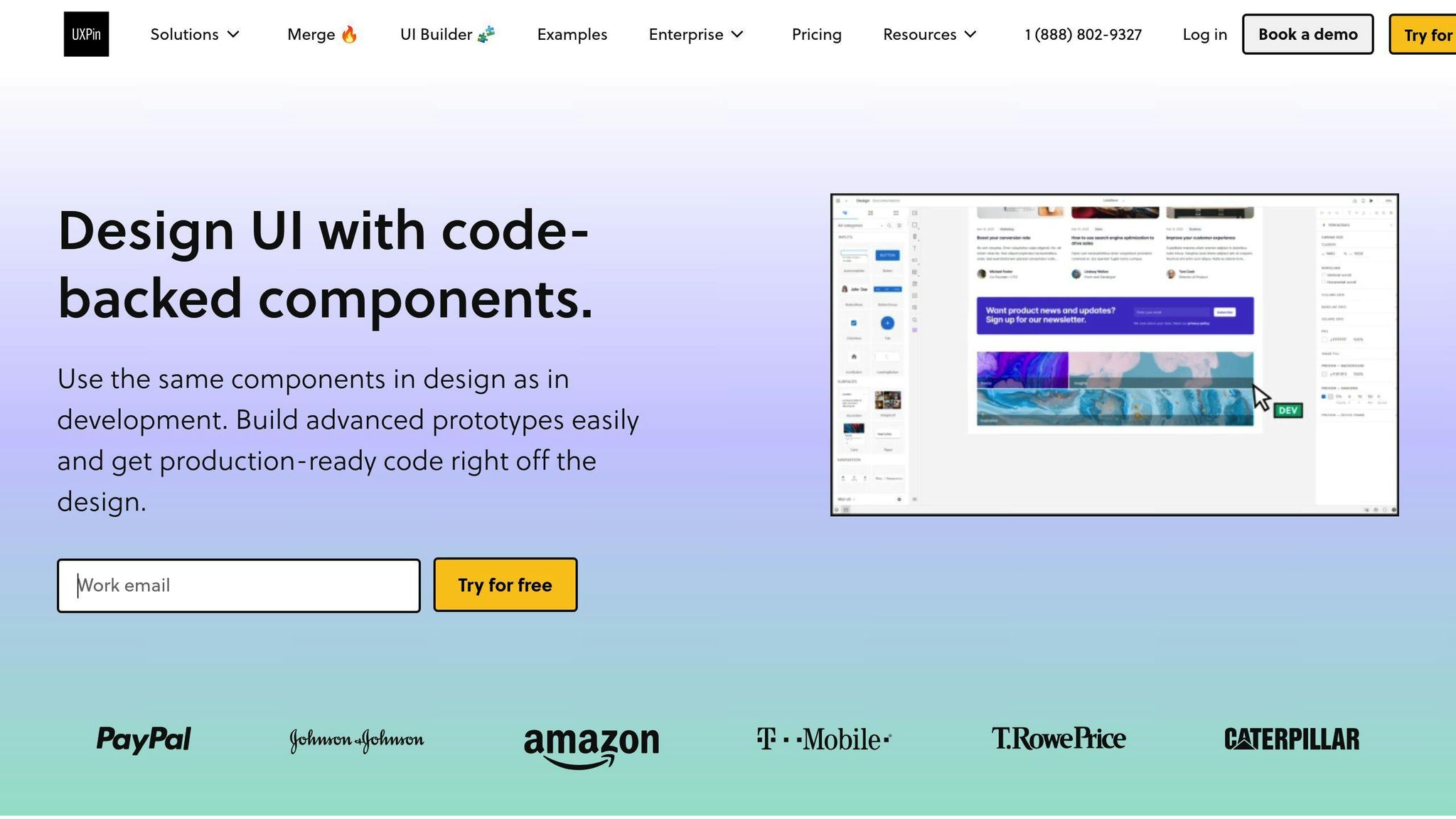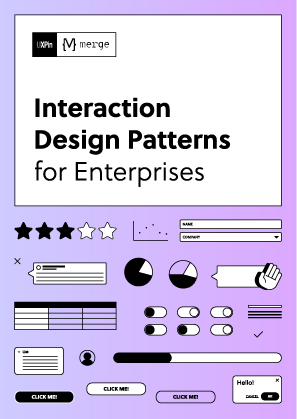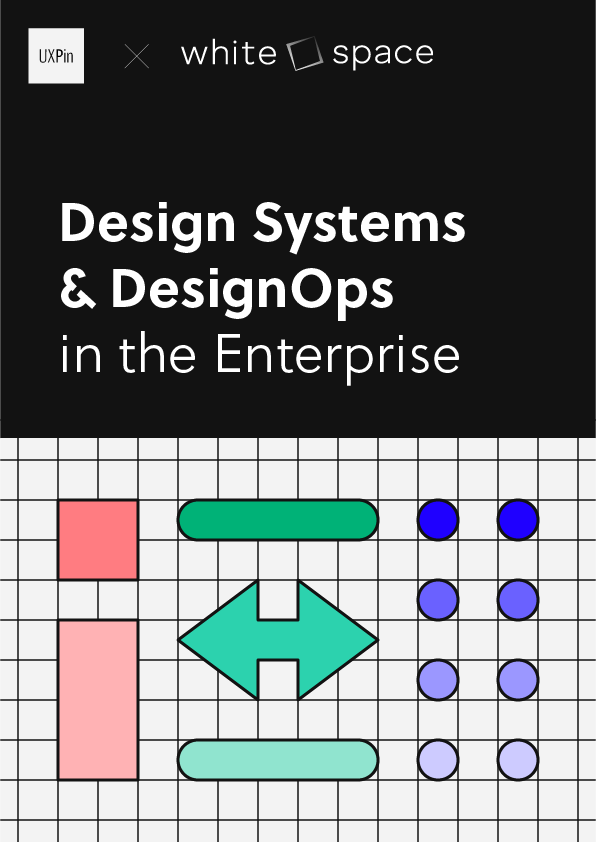Struggling with design system challenges? Here’s how to fix them:
- Team Alignment Issues: Improve communication between designers and developers with clear metrics, cross-functional roles, and structured decision-making models like IBM’s governance system.
- Platform Consistency: Use design tokens and multi-framework support (e.g., Microsoft Fluent) to ensure designs work seamlessly across devices and platforms.
- Scaling Problems: Manage growth with component quality tiers (e.g., Experimental, Beta, Stable), semantic versioning, and regular audits to prevent clutter and outdated elements.
Key Stats and Solutions:
- 70% boost in consistency: Companies like IBM and Spotify achieved this with design systems.
- 50% faster handoffs: Airbnb uses tokens to streamline workflows.
- 35% fewer errors: Tools like UXPin Merge enhance design-to-code integration.
By focusing on communication, consistency, and scalability, you can create a design system that saves time, improves quality, and scales effectively.
Building Versatile Design System for Enterprises – Prerequisites, Planning and Execution
Key Design System Implementation Problems
UXPin’s data highlights three major challenges in design system implementation: communication breakdowns between teams, inconsistencies across platforms, and difficulties in managing system growth.
Even with the advantages design systems offer, 69% of teams face adoption challenges, and 60% struggle with consistency issues.
Team Communication Gaps
Lack of communication between teams often leads to serious problems. When designers and developers operate separately, it results in mismatched goals and inconsistent use of components. Developers may waste time deciphering unclear specifications, and mismatched tools can cause endless back-and-forth between teams. This issue is especially common in large organizations where silos are more pronounced.
Platform Consistency Issues
Ensuring design consistency across platforms can be tricky. Here are common challenges and their impacts:
| Platform Challenge | Impact |
|---|---|
| Responsive Design | Components may fail on different screens |
| Performance Variations | Load times differ across devices |
| Accessibility Standards | Compliance varies between platforms |
Growth Management Difficulties
As design systems grow, keeping them organized becomes a challenge. Issues like component sprawl, version mismatches, and outdated documentation can disrupt workflows. Teams that succeed in managing growth often rely on strict governance practices and automated tools to maintain order.
Key strategies for managing growth include setting clear rules for phasing out unused components, tracking component usage through analytics, and keeping documentation centralized and up to date. These practices help prevent fragmentation while allowing the system to evolve alongside product demands.
Addressing these challenges is essential for improving team collaboration, ensuring cross-platform consistency, and maintaining scalable design systems.
How to Fix Team Communication Gaps
Poor communication between design and development teams can derail the implementation of a design system. McKinsey research shows that teams with strong leadership backing are 2.3 times more likely to collaborate effectively across functions. Here’s how to address these communication issues.
Setting Team Performance Metrics
Focus on tracking these key metrics:
| Metric | Purpose | Impact |
|---|---|---|
| Time to Consistent Component | Tracks how quickly components are implemented | Highlights delays in the design-to-development workflow |
| Design System Efficiency Score | Measures how well the system functions overall | Uber improved efficiency by 30% in 6 months using this metric |
| Component Adoption Rate | Monitors how widely the system is used across projects | Pinpoints obstacles to adoption |
Cross-Team Representatives
Spotify uses a "T-shaped" skill model, where team members combine deep expertise in their own field with a broad understanding of others. This approach breaks down barriers between design and development, encouraging better collaboration and shared knowledge.
Clear Decision-Making Structure
IBM’s Carbon Design System employs a structured, three-tier decision-making process to minimize confusion and speed up approvals:
- Core Team Decisions
Major changes to the system’s architecture and principles are managed by a governance committee, which includes representatives from design, development, and product teams. - Collaborative Decisions
Updates that impact multiple teams require input from all stakeholders. Tools like Figma’s branching feature help streamline proposals and reviews. - Community Contributions
Smaller changes can be suggested by any team member through a standardized process, ensuring everyone has a voice while maintaining quality.
Teams that use collaborative design-to-code tools with clear feedback channels report 35% better productivity and 28% fewer instances of miscommunication.
These strategies create a strong foundation for addressing platform consistency challenges, which we’ll dive into next.
Making Designs Work Across Platforms
Creating designs that function well across various platforms involves addressing challenges with solutions that blend standardization and flexibility. A great starting point is using atomic design elements.
Design Token System
Design tokens help unify visual properties across platforms. Several major companies have seen measurable benefits from implementing them:
| Company | Results |
|---|---|
| Airbnb | 50% faster handoffs using token workflows |
| Adobe | 35% efficiency improvement via token hierarchy |
These benefits directly tackle the consistency issues mentioned earlier in the Key Problems section.
To implement tokens effectively, it’s important to establish a clear hierarchy:
- Global tokens: Define brand-wide visual properties.
- Alias tokens: Provide context-specific variations.
- Component tokens: Focus on attributes for specific UI elements.
Multi-Framework Support
Microsoft’s Fluent Design System is a great example of maintaining core design principles while optimizing for specific platforms. Their documentation outlines when to use platform-specific patterns without undermining the overall system.
By combining core component logic with framework-specific wrappers, Fluent supports React, Angular, Vue, and vanilla JavaScript. This approach ensures consistent functionality while leveraging the unique strengths of each framework.
Auto-Updated Documentation
Accurate and up-to-date documentation is key to keeping teams aligned. Shopify’s Polaris design system demonstrates how automated documentation can streamline this process. Their method integrates:
- Component Code Integration
- Version Control
- Cross-Platform Guidelines
With a single source of truth, platform-specific details are automatically generated, ensuring all teams stay on the same page. This aligns with the growth strategies mentioned earlier.
sbb-itb-f6354c6
Improving Design-to-Code Process
Automated documentation helps keep teams aligned, but the real challenge lies in turning designs into code efficiently. This step can be tricky, but modern tools now make it possible to cut development cycles in half.
Tools for Design-Code Sync
To keep designs and code in sync, specialized tools can bridge the gap between design files and development workflows. Here are a couple of popular options:
| Tool | Key Feature |
|---|---|
| Zeplin | Generates style guides |
| Framer | Builds interactive prototypes |
Ensuring Code Standards
To preserve the integrity of your design system, automated checks are essential during the development process.
1. Pre-commit Validation
Automated checks before committing code can catch issues early, such as:
- Verifying component structures
- Validating design token usage
- Testing for accessibility compliance
2. Continuous Integration Checks
Ongoing testing ensures issues are identified quickly. This includes:
- Accessibility tests using tools like axe-core
- Visual regression testing
- Verifying component functionality
High-Quality Prototypes
Teams that use detailed, high-fidelity prototypes see a 75% boost in first-time approval rates. These prototypes should include:
- Interactive elements and real data integration
- Performance benchmarks for evaluation
- Documentation on cross-platform behavior
These steps lay the groundwork for tackling scaling challenges in the next phase.
Growing Your Design System
Scaling a design system takes thoughtful planning to ensure quality isn’t compromised. According to UXPin data, 60% of teams struggle with this balance. The strategies below tackle common challenges like component overload and version mismatches.
Managing Component Updates
Using semantic versioning can help keep component updates organized and predictable. This approach minimizes version mismatches and ensures smooth transitions when changes occur.
| Version | Changes | Example Use |
|---|---|---|
| Major (1.0.0) | Breaking changes | Overhauling a component’s API |
| Minor (0.1.0) | New features | Adding optional properties |
| Patch (0.0.1) | Bug fixes | Fixing alignment issues |
Tracking Component Usage
Tracking how components are used helps guide improvements based on real data. For example, Shopify’s Polaris design system team used this method to boost consistency across their system by 30% in just six months.
Defining Component Quality Levels
Establishing clear quality levels for components can prevent clutter and support organized growth:
- Experimental: For prototypes needing user feedback
- Beta: Production-ready but under observation
- Stable: Fully vetted and actively maintained
Regular audits can pinpoint outdated or unnecessary components, ensuring the system stays streamlined and effective.
Using UXPin for Design Systems

UXPin offers tools designed to tackle common challenges in implementing design systems, focusing on code integration, AI-driven features, and advanced testing. These tools are particularly useful for ensuring consistency across platforms and managing scalability.
Code Component Integration
With UXPin Merge, you can sync your design environment directly with Git repositories. This allows for the real-time use of production-ready React components and automates the generation of specifications.
AI Component Generation
UXPin’s AI tools simplify the process of creating components while keeping your design system consistent. The AI Component Creator can cut design time by up to 70%. It generates accessibility-compliant components, style variations, and design-code outputs that align with your existing patterns.
For example, a financial services company used this feature to create standardized transaction components for their banking platform, cutting development time by 40%.
Advanced Prototype Testing
UXPin’s advanced testing features make it easy to validate components in realistic scenarios. Using conditional logic, you can simulate real-world interactions and ensure your design system meets the required standards.
Testing options include:
- State management
- Data-driven interactions
- Multi-step user journeys
- Cross-platform verification
These features help reinforce documentation standards and ensure your design system performs as expected in real-world applications.
Conclusion: Steps to Better Design Systems
Creating a strong design system means tackling three main challenges: aligning your team, ensuring consistency across platforms, and scaling effectively. These steps have shown to boost consistency by 70% and speed up shipping times by 30% in successful examples.
Here’s how to approach each challenge:
Team Alignment and Communication
Clear communication is key. Frameworks like IBM’s three-tier governance model help reduce handoff issues between design and development while encouraging shared responsibility. Use measurable metrics to track your team’s progress and the system’s impact.
Technical Implementation
Focus on creating components that work across multiple frameworks, as seen in Microsoft’s Fluent design system. Tools like UXPin Merge can speed up development by letting designers work directly with production-ready components.
Growth Management
Introduce a tiered quality structure for your components to maintain clarity:
| Quality Level | Description | Review Process |
|---|---|---|
| Stable | Ready for production use | Requires full documentation |
| Deprecated | Planned for removal | Needs a migration plan |
For teams looking to put these ideas into practice, the UXPin tools covered earlier in Section 7 provide a solid foundation. Testing components in real-world scenarios will also help ensure your system performs as expected.

